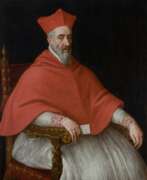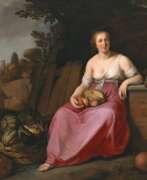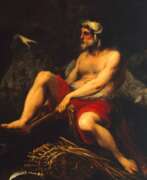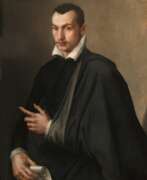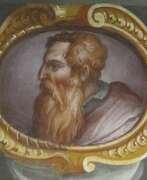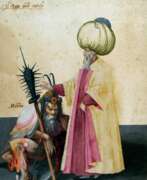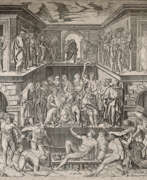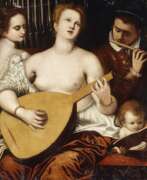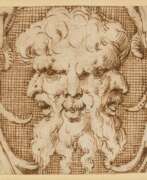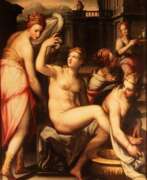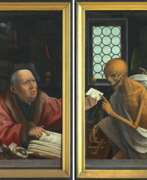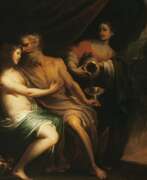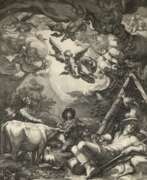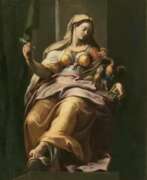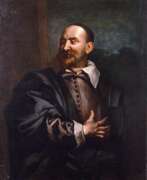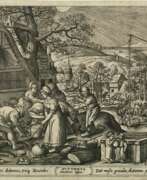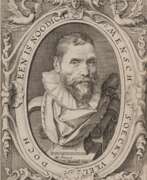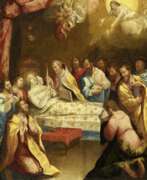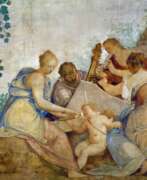Allegory Mannerism
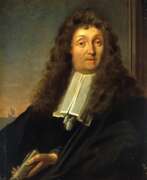

Ludolf Bakhuizen was a Dutch painter of the 17th and early 18th centuries. He is known as an outstanding master of seascapes. Bakhuizen also painted biblical themes and portraits of his contemporaries as well as engravings and miniature models of ships.
Ludolf Bakhuizen is considered one of the best marine painters of the Golden Age of Dutch painting. Among the admirers of his work were many influential European rulers, including the Russian Tsar Peter the Great. The master met Peter I, who visited Amsterdam in the mid-1690s and, according to contemporaries, even managed to give some painting lessons to the Russian tsar. In addition, Вakhuizen made models of all kinds of ship designs on commission from Peter the Great.
Toward the end of his life, the Amsterdam authorities honored Bakhuizen by opening his own gallery on the top floor of the City Hall for his achievements in the fine arts. The best masterpieces of his work are now preserved in museums in the Netherlands, Germany, England, France, and Italy.
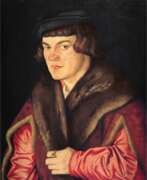

Hans Baldung, also known as Hans Baldung Grien, was a prominent figure in the German Renaissance, celebrated for his innovative approach to painting, printmaking, and drawing. Born around 1484 in Schwäbisch Gmünd, Germany, and passing away in 1545 in Strasbourg, France, Baldung's career was marked by a distinctive style that art historians have associated with the mannerist tendencies of the time. His work is notable for its exploration of themes such as the imminence of death, the complexities of human sexuality, and scenes of witchcraft, distinguishing him from his contemporaries with a bold and unique artistic voice.
Educated in the workshop of Albrecht Dürer, Baldung quickly developed his own artistic language, absorbing and then transcending Dürer's influence. He is particularly renowned for his altarpieces, portraits, and a series of works that delve into eroticism and the supernatural. Among his most significant contributions is the high altar of the Freiburg Münster, an eleven-panel masterpiece depicting scenes from the life of the Virgin Mary, which remains a testament to his mastery over religious subjects even as he ventured into more secular and profane themes.
Baldung's fascination with witchcraft and his portrayal of witches in art were groundbreaking for the time. His works in this area, such as "The Witches' Sabbath" and "Weather Witches," reveal a complex interplay of humanist thought, classical literature, and contemporary beliefs about witchcraft. They offer a nuanced perspective that blends satire with a deeper commentary on human nature and societal fears, marking Baldung as a pioneer in the visual exploration of these themes.
Despite his engagement with the themes of death and witchcraft, Baldung's oeuvre is also rich in portraits characterized by sharp individualization and psychological depth, as well as altarpieces that convey a profound spiritual and theological insight. His ability to navigate between the realms of the divine and the earthly, the solemn and the profane, solidifies his position as a versatile and innovative artist of the Renaissance.
For collectors and experts in art and antiques, Hans Baldung's work offers a unique window into the confluence of Renaissance artistry, humanist thought, and the socio-religious dynamics of early 16th-century Europe. His paintings and prints not only adorn museums and galleries worldwide but also continue to inspire and provoke deep reflection on the human condition.
To stay informed about new discoveries, exhibitions, and auction events related to Hans Baldung's art, signing up for updates can provide enthusiasts and collectors with valuable insights into the enduring legacy of this remarkable artist. This subscription service is designed to alert subscribers to new product sales and auction events specifically related to Hans Baldung, ensuring that they remain at the forefront of developments in the field of Renaissance art and antiques.
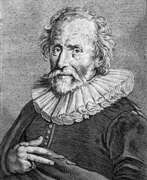

Abraham Bloemaert was a Dutch painter, draughtsman, and printmaker from the Golden Age of Dutch painting, one of the founders of the Guild of St. Luke in Utrecht. Bloemart was a caravagist. He painted mainly landscapes, mythological and biblical scenes, and pastoral works.
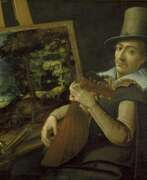

Paul Bril was a prominent Flemish painter, best known for his significant contributions to landscape painting. Born around 1554 in Antwerp, he later moved to Rome, where he became a central figure in the art scene, influencing the Italian and Northern European landscape painting traditions.
Paul Bril's early works were steeped in the Flemish manner, exhibiting a picturesque arrangement of landscape elements with dramatic contrasts of light and dark. His style evolved during his stay in Rome, influenced by the work of Annibale Carracci and Adam Elsheimer. By around 1605, Bril's compositions became more serene and classical, showcasing calmer transitions from foreground to background and embracing pastoral and mythological themes.
Paul Bril's contributions extended beyond his paintings. He was a respected figure in Rome's art community, becoming the first foreign director of the Accademia di San Luca in 1621. His patrons included some of the most influential families in Rome, and his work was sought after by collectors and fellow artists. Bril's influence was profound, impacting future generations of artists, including the Dutch Italianates and genre painters active in Rome.
His works can be found in prestigious galleries worldwide, illustrating his enduring legacy in the art world. For collectors and art and antiques experts, Paul Bril's work represents a significant period in the evolution of landscape painting, blending Flemish traditions with Italian classicism.
For those interested in exploring the captivating landscapes and historical significance of Paul Bril's art, staying informed about new product sales and auction events is essential. Signing up for updates can provide valuable insights and opportunities to acquire pieces associated with this influential artist.


Agostino Carracci, an Italian painter and printmaker born in 1557 in Bologna, is celebrated not just for his own art but also for his significant contributions alongside his brother Annibale and cousin Ludovico to the revitalization of Italian painting at the end of the sixteenth century. While Agostino's paintings are noteworthy, he is particularly distinguished as one of the premier printmakers of his era, producing high-quality reproductive engravings of works by renowned artists like Veronese and Tintoretto, as well as his original creations.
His collaborative work with Annibale on the frescoes for the gallery of the Palazzo Farnese in Rome is one of the notable highlights of his career, demonstrating the Carracci family's impact on the direction of Italian art towards a more realistic and classical style, countering the prevalent Mannerist tendencies of their time. His untimely death in 1602 in Parma curtailed a career that, through his engravings and teachings at the informal academy founded in Bologna with his relatives, influenced a broad swath of the art world, including future generations.
For art collectors and experts, Agostino Carracci's works offer a glimpse into a pivotal moment in art history, where a shift towards classical realism was being forged. His engravings and paintings remain a testament to his skill and a vital part of the narrative of Italian art's evolution.
To delve deeper into Agostino Carracci's world and stay informed about related artworks and auction events, signing up for updates is a proactive step. By subscribing, you'll receive tailored information about Agostino Carracci, ensuring you're always in the loop regarding new insights and opportunities in the realm of art and antiques related to this influential figure.
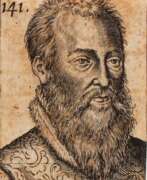

François Clouet was a major French Renaissance portrait painter.
François was the son of the painter Jean Clouet (1485-1540), from whom he learned painting. He became the favorite court portraitist of Kings Francis I, Henry II, Francis II and Charles IX.
François Clouet became famous for his mastery, accurately conveying the characters of people and meticulously painting their costumes.
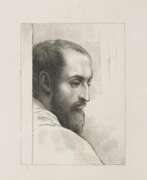

Antonio da Correggio was a seminal figure in the Italian Renaissance, particularly renowned for his mastery in illusionistic fresco decoration. His works bridged the gap between the High Renaissance and the Baroque movement, influencing many subsequent artists in the Baroque and Rococo styles. Antonio da Correggio is celebrated for his dynamic compositions, innovative use of perspective, and the sensual nature of his paintings, which often depicted religious and mythological themes.
Antonio da Correggio's notable contributions include the frescoes in the dome of San Giovanni Evangelista and the Cathedral of Parma. His work, characterized by dramatic foreshortening and emotional intensity, represents a pioneering approach to dome decoration, creating an immersive experience for the viewer. The "Assumption of the Virgin" in Parma's Cathedral is particularly renowned for its dynamic composition and innovative perspective, offering a celestial vision filled with angels and figures in motion, heralding the artistic transitions towards the Baroque era.
Additionally, Antonio da Correggio's mythological series, such as "Jupiter and Io" and "Leda and the Swan," demonstrate his ability to blend sensuality with divine themes, presenting these narratives with a tender and intimate touch that was groundbreaking for his time.
For collectors and experts in art and antiques, Correggio's works epitomize the transition in art styles from the Renaissance to the Baroque, showcasing his unique ability to convey emotion and movement through his innovative techniques and compositions.
To delve deeper into the life and works of Antonio da Correggio, consider subscribing to updates from art institutions or platforms that specialize in Renaissance art, ensuring you stay informed about exhibitions, sales, and scholarly research related to this influential artist.
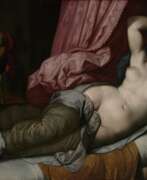

Jacob de Backer was a Flemish painter.
He is known to have worked in Antwerp between about 1571 and 1585 and was a very prolific painter. Many paintings and altarpieces in Antwerp and Italy are signed with his name. Bakker also created many elaborate compositions on allegorical subjects.
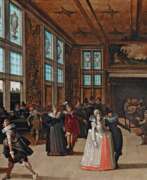

Louis de Caullery was a Flemish painter who is known for his architectural scenes, city views, genre scenes, allegorical compositions and history paintings. He was one of the pioneers of the art genre of courtly gatherings and the garden parties (fête champêtre) in Flemish painting.
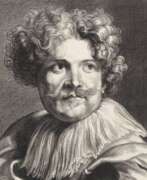

Simon de Vos was a Flemish painter, graphic artist and art collector, a member of the Guild of St. Luke in Antwerp.
Simon de Vos specialized early in his career in cabinet and genre painting in the style of the Utrecht Caravagistes. His depictions of merry company and scenes from fables are well known. From about 1640 he increasingly painted large-scale religious, allegorical and historical scenes in the style of Peter Paul Rubens and Antoni van Dyck. Among his pupils was Jan van Kessel the Elder (1626-1679).
Simon de Vos was financially successful: by the end of his life he owned four estates in Antwerp and a collection of 290 paintings.
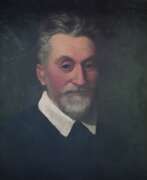

Giovanni di Niccolò de Luteri, better known as Dosso Dossi, was an Italian Renaissance painter who belonged to the School of Ferrara, painting in a style mainly influenced by Venetian painting, in particular Giorgione and early Titian.
From 1514 to his death he was court artist to the Este Dukes of Ferrara and of Modena, whose small court valued its reputation as an artistic centre. He often worked with his younger brother Battista Dossi, who had worked under Raphael. He painted many mythological subjects and allegories with a rather dream-like atmospheres, and often striking disharmonies in colour. His portraits also often show rather unusual poses or expressions for works originating in a court.


Frans Floris de Vriendt the Elder was a Flemish painter and engraver of the 16th century.
The artistic style of Frans Floris was strongly influenced by the Italian Renaissance. He combined elements of Italian mannerism with his own interpretation, creating a distinctive style characterized by attention to detail, vivid colours and dynamic compositions.
Frans Floris was known for his large-scale historical and mythological paintings, which often depicted complex subjects and included many figures. His works demonstrated his ability to create dramatic and evocative scenes, exploring themes of religion, mythology and human emotion.
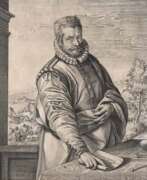

Philips Galle was a Dutch publisher, best known for publishing old master prints, which he also produced as designer and engraver. He is especially known for his reproductive engravings of paintings.
As a resident of Antwerp, Galle witnessed numerous events of the Eighty Years War, notably the siege and looting of the town in 1576 by the Spaniards, called "The Spanish Fury". This rather personal book, which was translated in several languages soon after its first publication, shows Galle as a peace-loving person who intended to stay far away from the political and military turmoil of his era.
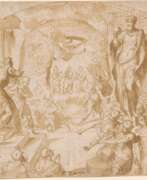



Cornelis Cornelisz. van Haarlem was a Dutch painter, draftsman, and architect. Along with Karel van Mander and Hendrik Goltzius, he is one of the leading artists of the Dutch Mannerism of the Haarlem School, more commonly referred to as Cornelis van Haarlem.
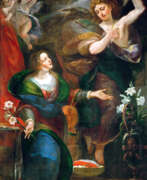

Camillo Procaccini was an Italian painter. He has been posthumously referred to as the Vasari of Lombardy, for his prolific Mannerist fresco decoration. He was the son of the painter Ercole Procaccini the Elder, and older brother to Giulio Cesare and Carlo Antonio, both painters.
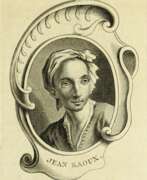

Jean Raoux was a French painter.
After the usual course of training he became a member of the Academy in 1717 as an historical painter. His reputation had been previously established by the acclaimed decorations executed during his three years in Italy on the palace of Giustiniani Solini in Venice, and by some easel paintings, the Four Ages of Man (National Gallery), commissioned by the grand prior of Vendôme. To this latter class of subject Raoux devoted himself, refusing to paint portraits except in character. The list of his works is a long series of sets of the Seasons, of the Hours, of the Elements, or of those scenes of amusement and gallantry in the representation of which he was immeasurably surpassed by his younger rival Watteau. After his stay in England (1720) he lived much in the Temple, where he decorated several rooms.
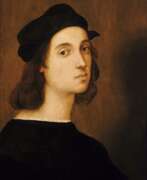

Raffaello Santi was an Italian artist, famously known for his contributions to the world of culture and art. Born in Urbino, Italy, in 1483, Raffaello Santi, commonly known as Raphael, was a renowned painter and architect during the Italian Renaissance. His exceptional talents in the realms of painting and sculpture have left an indelible mark on the art world, earning him a place among the greatest artists of all time.
Raphael's works are celebrated for their exquisite detail, harmonious compositions, and the graceful beauty of his subjects. He is best known for his remarkable frescoes in the Vatican Palace, including the famous "School of Athens," which exemplifies his mastery in blending classical antiquity with contemporary artistic sensibilities. His ability to capture the human form with unparalleled accuracy and sensitivity has earned him a reputation as a true virtuoso.
Among his other notable works are "The Sistine Madonna" and "The Transfiguration," both of which showcase his exceptional skills in portraying religious subjects with a captivating emotional depth. These paintings, along with many others, are now cherished treasures in museums and galleries worldwide, drawing art enthusiasts and experts alike to admire Raphael's timeless creations.
For collectors and art connoisseurs, Raphael's works are highly sought after, not only for their historical significance but also for their aesthetic appeal. His pieces continue to command great value in the art market, making them a valuable addition to any art collection.
If you are passionate about culture, art, and the works of this celebrated artist, consider signing up for updates related to Raphael Santi. Stay informed about new product sales and auction events featuring his masterpieces, and have the opportunity to acquire a piece of art history for yourself. Don't miss the chance to immerse yourself in the world of Raphael and his timeless contributions to the realm of art. Subscribe today and be a part of preserving his legacy.
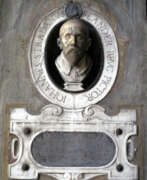

Jan van der Straet (Italian: Giovanni Stradano, Latin: Stradanus) was a Flemish and Italian Mannerist painter.
Van der Straet is best known for his large-scale frescoes, which decorate several important buildings in Florence and Rome. He also created numerous prints and paintings on a variety of subjects, including mythology, biblical scenes, and historical events.
One of his most famous works is a series of prints called Nova Reperta (New Discoveries), which depict some of the major technological advancements of the 16th century, such as the printing press, the compass, and the telescope. The series was highly influential and helped to spread knowledge and awareness of these new technologies throughout Europe.
Van der Straet was a highly skilled artist and his works are known for their attention to detail and realism. He was also a skilled draftsman and many of his drawings and sketches have survived to this day. His influence can be seen in the works of many later artists, including Rubens and Rembrandt.


Otto van Veen was a painter, draughtsman, and humanist active primarily in Antwerp and Brussels in the late 16th and early 17th centuries. He is known for running a large studio in Antwerp, producing several emblem books, and for being, from 1594 or 1595 until 1598, Peter Paul Rubens' teacher. His role as a classically educated humanist artist (a pictor doctus), reflected in the Latin name by which he is often known, Octavius Vaenius, was influential on the young Rubens, who would take on that role himself.
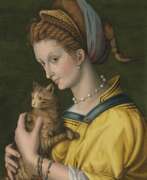

Francesco Ubertini Verdi, nicknamed Bacchiacca, was an Italian late Renaissance painter of the Florentine school.
He was born into a creative family: his father was a goldsmith and his brothers were painters. Bacchiacca earned a reputation for his skill as a painter and became the court painter to the dukes, and carried out commissions to paint walls and ceilings for noble Italian families, painting portraits, allegories, altarpieces and images.
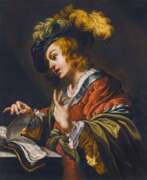

Claude Vignon was a French Baroque painter, illustrator, and etcher and a member of the Guild of Artists of Paris.
Vignon was a versatile artist and worked in many different genres: he painted portraits, domestic scenes, and religious works. During a trip to Italy he studied, among other things, the work of Caravaggio, but in his art he mixed a variety of techniques and styles, from Mannerism to Venetian, Dutch and German art. His works are brightly colored, the lighting is gorgeous, and the characters are expressive.
Claude Vignon was also one of the most distinguished engravers and illustrators in 17th-century France.
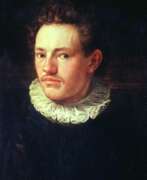

Hans von Aachen was a German painter, renowned for his role as a leading representative of Northern Mannerism. His journey into the art world took him from Rome, where he studied antique sculptures and the works of Italian masters, to Florence and then Venice, securing commissions that would define his early career. Notably, his work caught the attention of the Medici family, leading to significant commissions.
By 1592, von Aachen had become the official painter for Emperor Rudolf II in Prague. This position didn't require him to stay at court, allowing him to work from his residence. His relationship with Rudolf II was pivotal, marking a period where his art flourished under the emperor's patronage, celebrated for mythological paintings and complex allegories. The emperor's appreciation for painting and the arts transformed Prague into a significant art center, fostering a style full of elegance and sensuality known as Mannerism.
Hans von Aachen's style, influenced by Italian Mannerism and northern realism, showcased his versatility through portraits, historical, religious subjects, and allegories. His significant works include the "Allegory of Peace, Art and Abundance," depicting personifications of Peace, Science and the Liberal Arts, and Abundance, celebrated for illustrating the flourishing of these ideals under Rudolf II's reign. This piece, among others, found its home in prestigious collections like the Hermitage Museum in Saint Petersburg.
His contribution to the art world was acknowledged by the European courts, merchants, and the nobility. Even after Rudolf II's death, Hans von Aachen continued his work for Matthias, focusing on imperial portraits until his death in Prague in 1615. His legacy, momentarily overshadowed by the nationalistic perspectives of the 19th century, has been reevaluated, recognizing him as a key figure in European cultural exchange and Mannerism.
For art collectors and experts interested in Mannerism and Hans von Aachen's work, his journey from an admired artist at European courts to a celebrated figure in art history underscores the lasting impact of his work. His ability to navigate the cultural and artistic demands of his time, leaving behind a body of work that continues to be studied and appreciated, makes him a fascinating subject of study.
For updates on new product sales and auction events related to Hans von Aachen, sign up here. This subscription is your gateway to exploring the remarkable works of this distinguished Mannerist painter, ensuring you never miss an opportunity to own a piece of history.
